May 16, 2010 – Midday
The nights out here have been wonderful. Not only do we get to rest while things cool off considerably and Rashid sets to work on the evening meal, but we also get to enjoy the type of clear, starry sky you can only find in a dry environment far from city lights, in the desert or the arctic. The company we paid to arrange this trek is called Caravane Mille Etoiles, the Caravan of the Thousand Stars, and the name is apt. The only thing they should work on is actually telling people that it is not a camel ride into the desert so much as a relentless death march in the baking sun.
The dunes themselves have also been enjoyable, even though we have only been camping among relatively small ones (maybe 50m tall). Burying one’s sore feet in the still-warm sand and watching the sun set over a sea of dunes must be one of life’s great pleasures. The colours and textures that come out of the sand are predictably beautiful, although serious photography is all but impossible due to the heat, fatigue and just wanting to enjoy the last light of day without looking through a camera viewfinder.
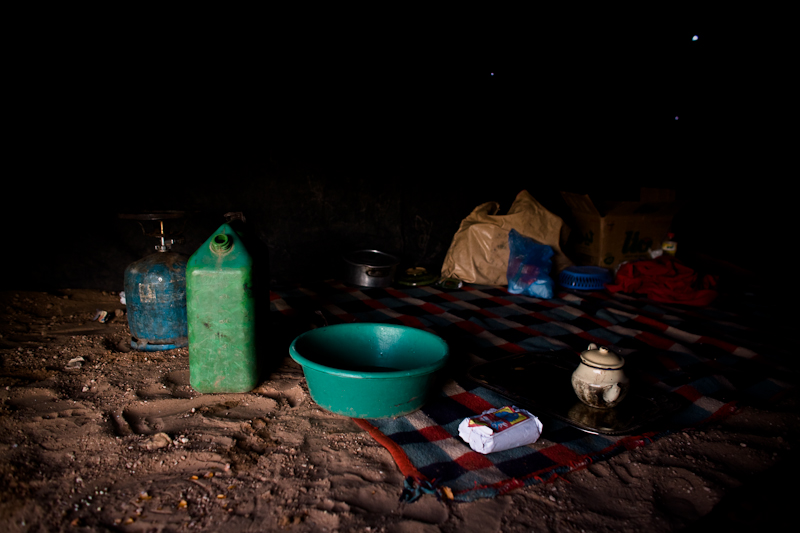
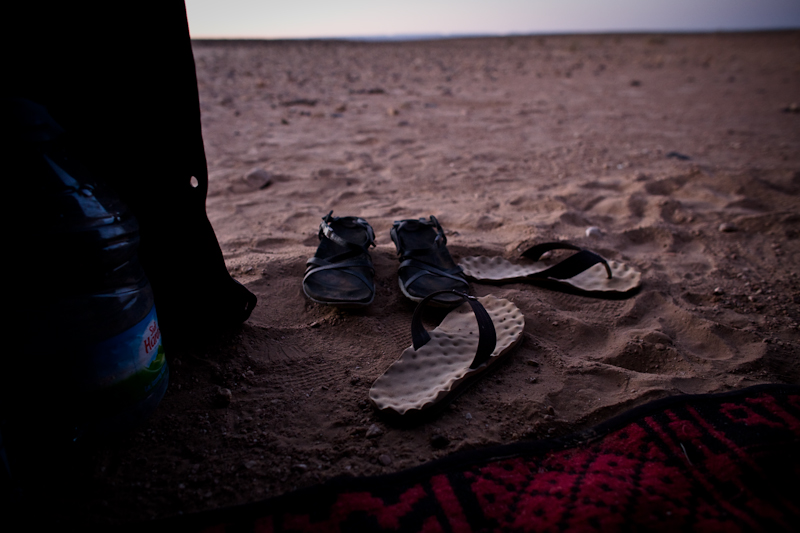
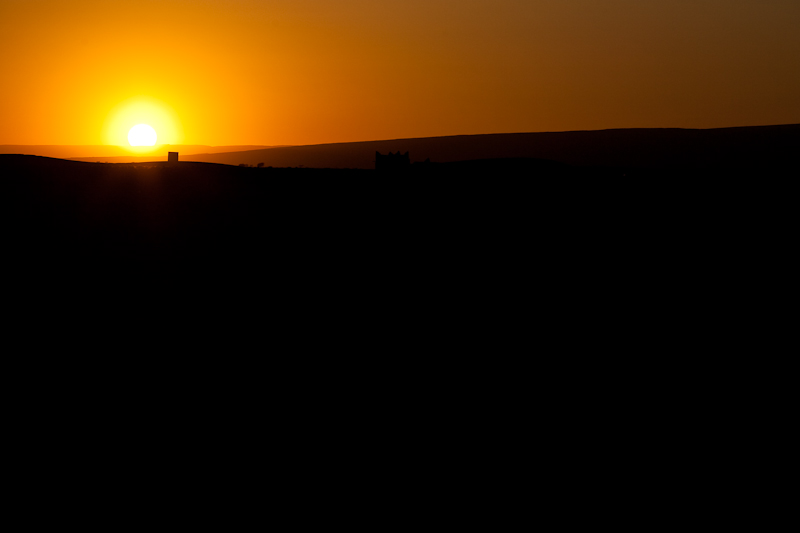
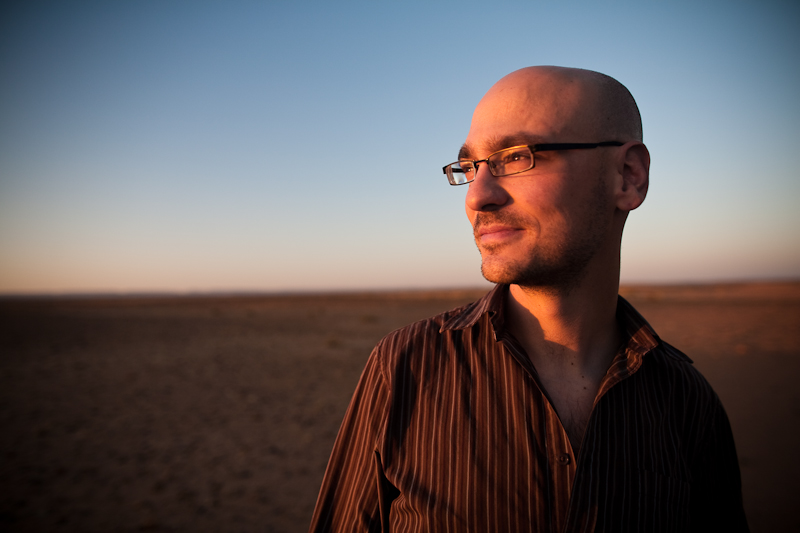
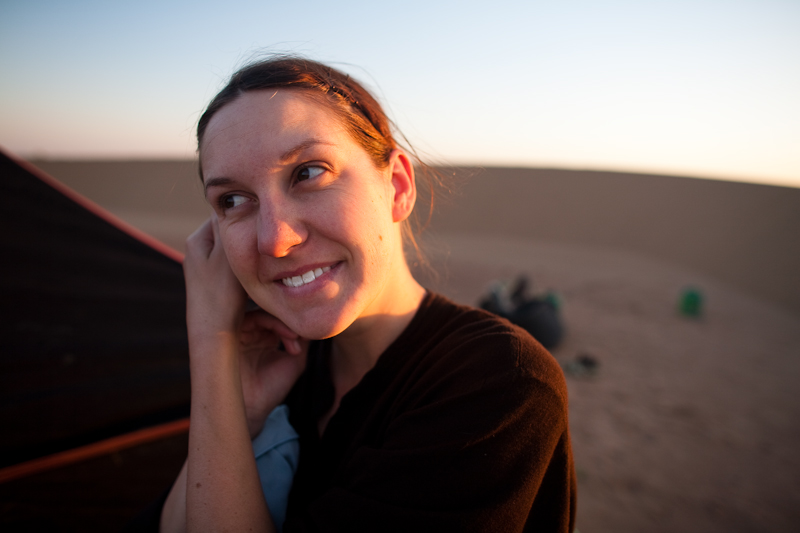
One of the other highlights of our trek has been the array of desert life we’ve been lucky enough to come across. Of course living next to two huge, blundering camels has had its moments. Camels aren’t known for being shy about their bodily processes, pooping and peeing whenever and wherever the mood strikes them (including all over themselves), and burping and farting as they spend the night just outside our airy tent. It’s like a desert symphony to offset the beauty of the starry sky.
Shariff and Mimoun are also natural garbeurators, eating anything put within reach of their searching camel lips. They’ll eat anything from food scraps like orange and melon peels (they like these a lot) to the scrubbiest thorn bushes in the desert. And that’s just breakfast. Shariff even ate Laura’s prized fossilized rock.
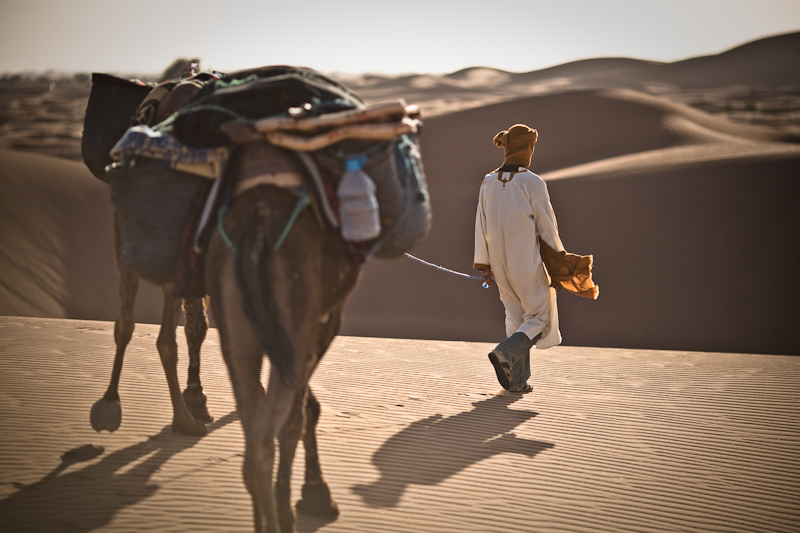
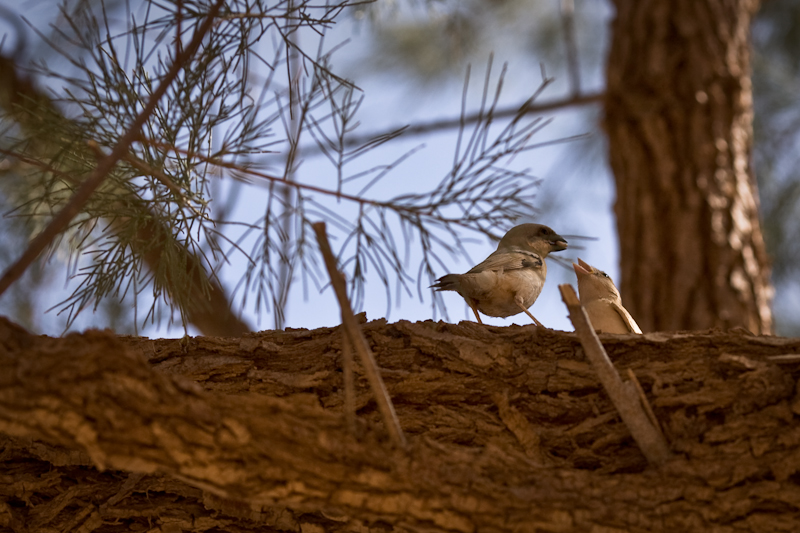
But we’ve enjoyed other wildlife as well, including plenty of scarab beetles, red ants, a burrowing owl, crows and small desert birds. This morning Laura spotted a dung beetle methodically rolling his breakfast (one of Shariff’s ping-pong sized droppings) home for the wife and kids. We’ve also seen lizards and had fatal encounters with a camel spider and snake. Thankfully, the encounters were fatal for the spider and snake, not us.
Actually, the snake was probably the most dangerous thing that has happened to us during the trek. Rashid was calm but stern after he spotted the snake on a nearby dune, not two minutes after leaving camp this morning. Laura and I went for our cameras as the snake slithered its way up a dune away from us, but if we went closer than about four meters, Rashid would say loudly, “Attencion! Attencion!“, motioning us back. When he snatched a tent pole and went after the creature, Laura and I both went into conservator mode, trying to tell Rashid that it wasn’t necessary to kill the thing, as the snake clearly only wanted to get away.
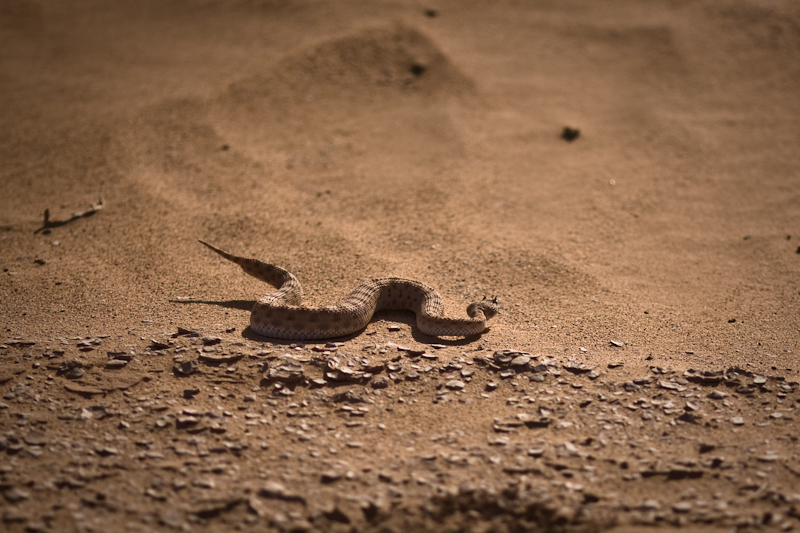
But Rashid answered by hooking two fingers downward in the air with a quick hissing sound, in obvious imitation of snake fangs sinking into their prey. “Mort,” he said, simply. “Mort.”
So we watched as Rashid deftly decapitated the snake with one blow of the tent pole, followed by several more for good measure. After some prodding and our usual halted communication, we later learned from Rashid that this type of horned snake (he didn’t know the name in English, Arabic, Berber, or French) can kill a person with one bite. The venom is fatal every time, and the victim might only have one to three hours to live after a bite. (Update: After being spurred on by our friend Christine, who identified this beastie as a Saharan Horned Viper, or Cerastes Cerastes, I did a bit more research. The bite is not necessarily immediately fatal, but can lead to severe complications if gone untreated. Don’t believe everything you hear in the desert, apparently.)
Believe me when I say, we were very much on the lookout for other snakes after that. We were also quite grateful to have been ignorant of this knowledge during the first three and a half days of our trek.
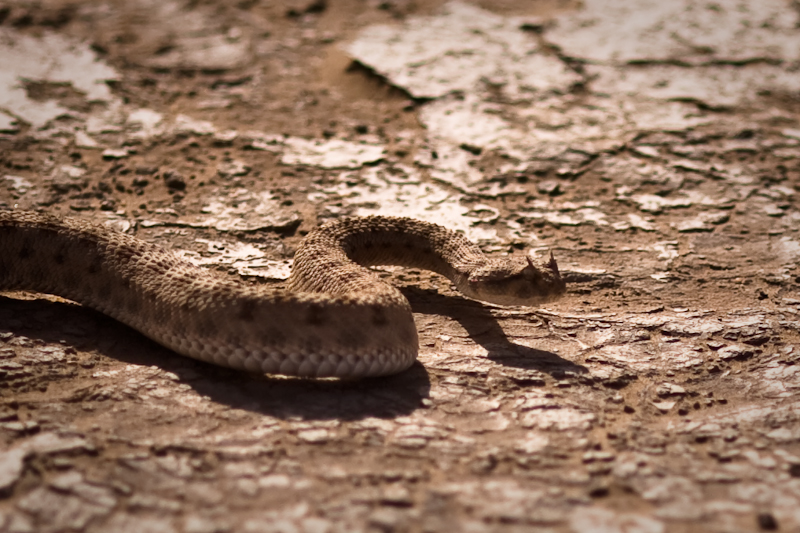
We have one more hot afternoon of walking to go. We feel better now after eating and a short nap. Rashid says it is only about an hour more. After lunch the desert always feels more romantic and exciting. Our energy levels are up and we ready to set out again.
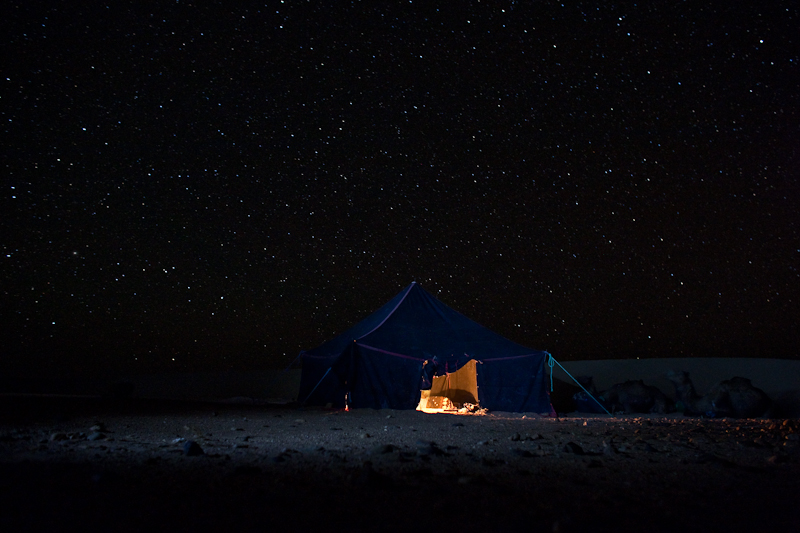
This is just one part of a six-part series on our camel trek in the Moroccoan Sahara. To read the full story, please click here.

Leave a Reply